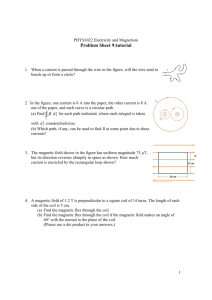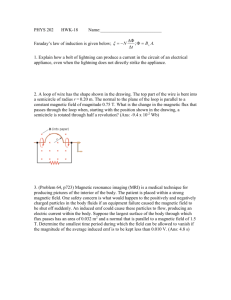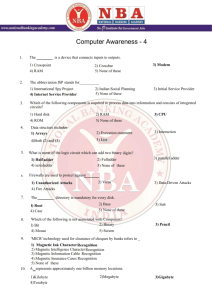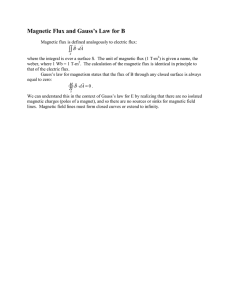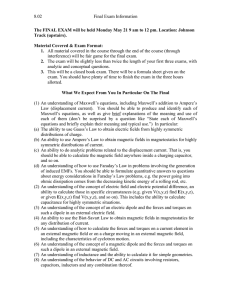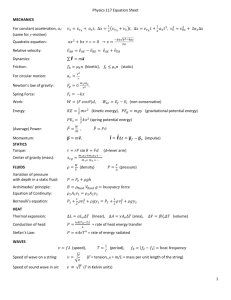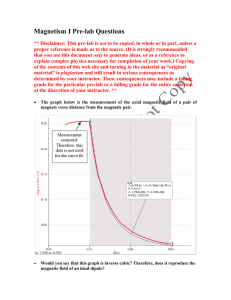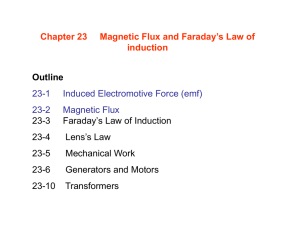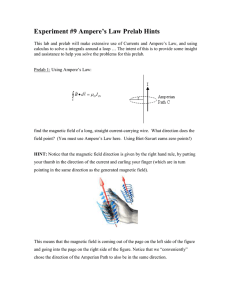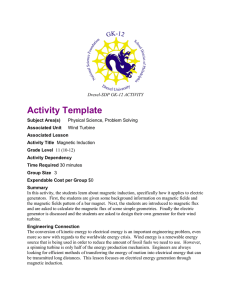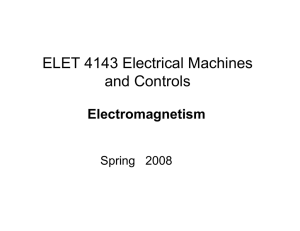Section 5.1 – Magnetic Fields
advertisement
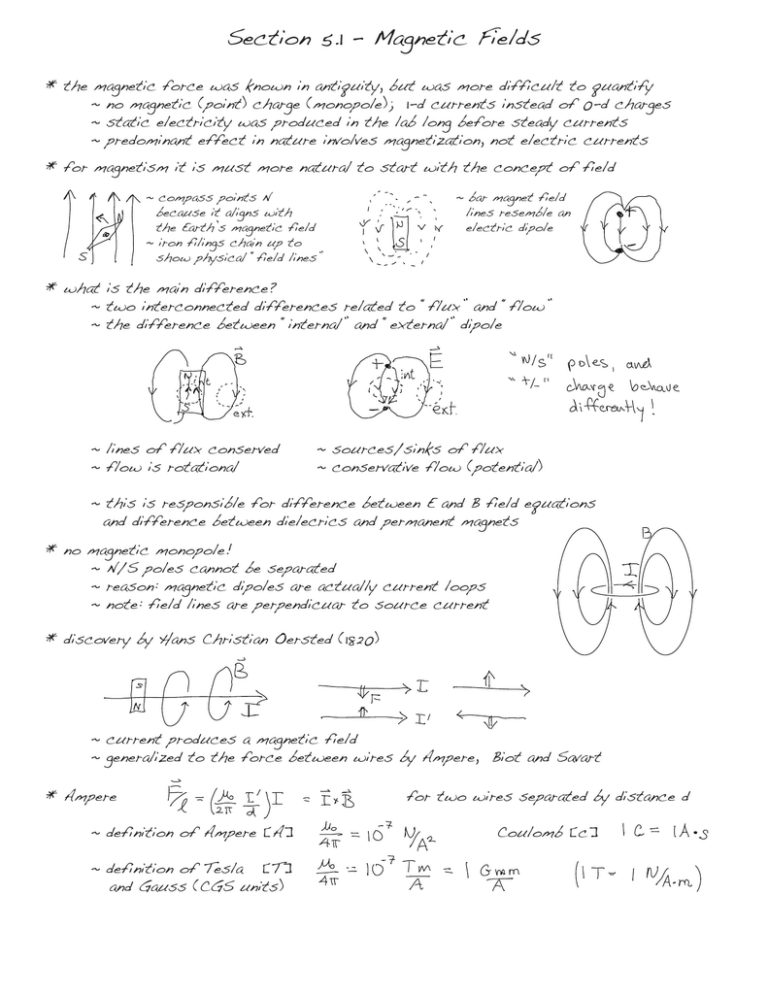
Section 5.1 – Magnetic Fields * the magnetic force was known in antiquity, but was more difficult to quantify ~ no magnetic (point) charge (monopole); 1-d currents instead of 0-d charges ~ static electricity was produced in the lab long before steady currents ~ predominant effect in nature involves magnetization, not electric currents * for magnetism it is must more natural to start with the concept of field ~ compass points N because it aligns with the Earth’s magnetic field ~ iron filings chain up to show physical “field lines” ~ bar magnet field lines resemble an electric dipole * what is the main difference? ~ two interconnected differences related to “flux” and “flow” ~ the difference between “internal” and “external” dipole ~ lines of flux conserved ~ flow is rotational ~ sources/sinks of flux ~ conservative flow (potential) ~ this is responsible for difference between E and B field equations and difference between dielecrics and permanent magnets * no magnetic monopole! ~ N/S poles cannot be separated ~ reason: magnetic dipoles are actually current loops ~ note: field lines are perpendicuar to source current * discovery by Hans Christian Oersted (1820) ~ current produces a magnetic field ~ generalized to the force between wires by Ampere, Biot and Savart * Ampere ~ definition of Ampere [A] ~ definition of Tesla [T] and Gauss (CGS units) for two wires separated by distance d Coulomb [c] Section 5.2 – Current Elements; Lorentz Force Law * magnetic force law ~ the combination occurs frequently, it is called the “current element” ~ units: A m = C m/s ~ qv, much like a “charge element” * current density * conservation of charge: Kirchov’s current law * relation between charge and current elements ~ written as 4-vectors * Lorentz force law * Magnetic forces do no work tangential acceleration (not quite) radial acceleration (always) “gas pedal” “steering wheel” ~ similar to the normal force which only deflects objects
